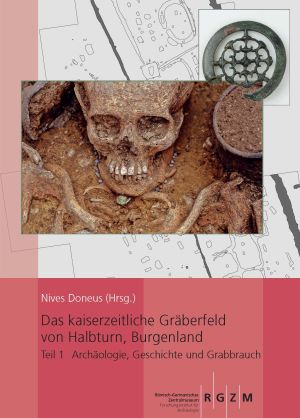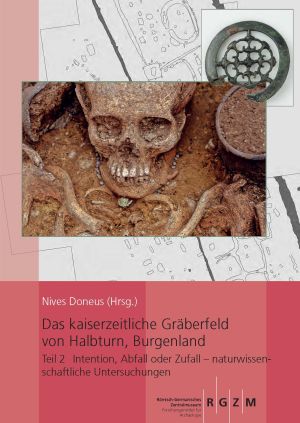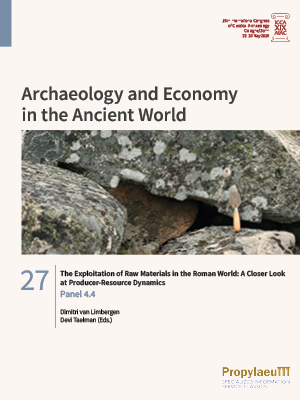Draganits, Erich
Das kaiserzeitliche Gräberfeld von Halbturn, Burgenland: Teil 1: Archäologie, Geschichte, Grabbrauch
At that time, the Roman cemetery of Halbturn I belonged to the western part of Pannonia; the ancient city of Carnuntum was about 30 km away. The cemetery was completely investigated by systematic excavations, which is unusual for this region.
The finds show a great variability in burial customs, which can be seen in the positioning of the burials and the buried, as well as in the different efforts invested in the construction of the tombs. These characteristics depend, on the one hand, on the chronological period in question (2nd-5th century) and, on the other, on the personal status of the deceased (according to age at death, sex and physical disabilities). Particularly unusual are the numerous infant and child graves.
In addition to the archaeological-typological evaluation, the monograph offers important insights into life at the time: for example, a child's amulet is the oldest evidence of Jewish faith in Austria to date. Nutrition, diseases and injuries - whether caused by agricultural activities or domestic violence - are also described in detail, as well as considerations on animal breeding and husbandry, cultivated and wild plants, stone monuments, etc. Last but not least, the site, which was previously recorded by aerial archaeology, geophysical prospection and systematic field surveys, offers numerous further insights into the associated agricultural holdings.
Das kaiserzeitliche Gräberfeld von Halbturn, Burgenland: Teil 2: Intention, Abfall oder Zufall – naturwissenschaftliche Untersuchungen
At that time, the Roman cemetery of Halbturn I belonged to the western part of Pannonia; the ancient city of Carnuntum was about 30 km away. The cemetery was completely investigated by systematic excavations, which is unusual for this region.
The finds show a great variability in burial customs, which can be seen in the positioning of the burials and the buried, as well as in the different efforts invested in the construction of the tombs. These characteristics depend, on the one hand, on the chronological period in question (2nd-5th century) and, on the other, on the personal status of the deceased (according to age at death, sex and physical disabilities). Particularly unusual are the numerous infant and child graves.
In addition to the archaeological-typological evaluation, the monograph offers important insights into life at the time: for example, a child's amulet is the oldest evidence of Jewish faith in Austria to date. Nutrition, diseases and injuries - whether caused by agricultural activities or domestic violence - are also described in detail, as well as considerations on animal breeding and husbandry, cultivated and wild plants, stone monuments, etc. Last but not least, the site, which was previously recorded by aerial archaeology, geophysical prospection and systematic field surveys, offers numerous further insights into the associated agricultural holdings.
The Exploitation of Raw Materials in the Roman World: A Closer Look at Producer-Resource Dynamics: Panel 4.4
Compared to other pre-modern economies, the Roman world stands out for having developed a highly specialised and very productive manufacturing sector. This development led to the widespread and large-scale extraction of raw materials. Even in a territory as large as the Roman Empire, such activities put major
pressure on the land. Strategies of resource exploitation and conservation were thus essential in dealing successfully with the limited availability of these resources in the medium or long term, and to ensure the sustainability of the Roman exploitation model. This volume deals with the various ways in which natural resources were exploited and managed in the Roman world. It focuses on if, when, where and how the Romans pursued a harmonious balance between the limited availability of a particular resource and the law of supply and demand. The case studies in this volume cover various key areas of the Western Roman world – from Italy and the island of Elba, over coastal Croatia to Central-Eastern Gaul and the Pannonian limes – and discuss in particular the fi sh industry, iron smelting, deforestation and forest management, the stone trade and the exploitation of thermo-mineral resources.









